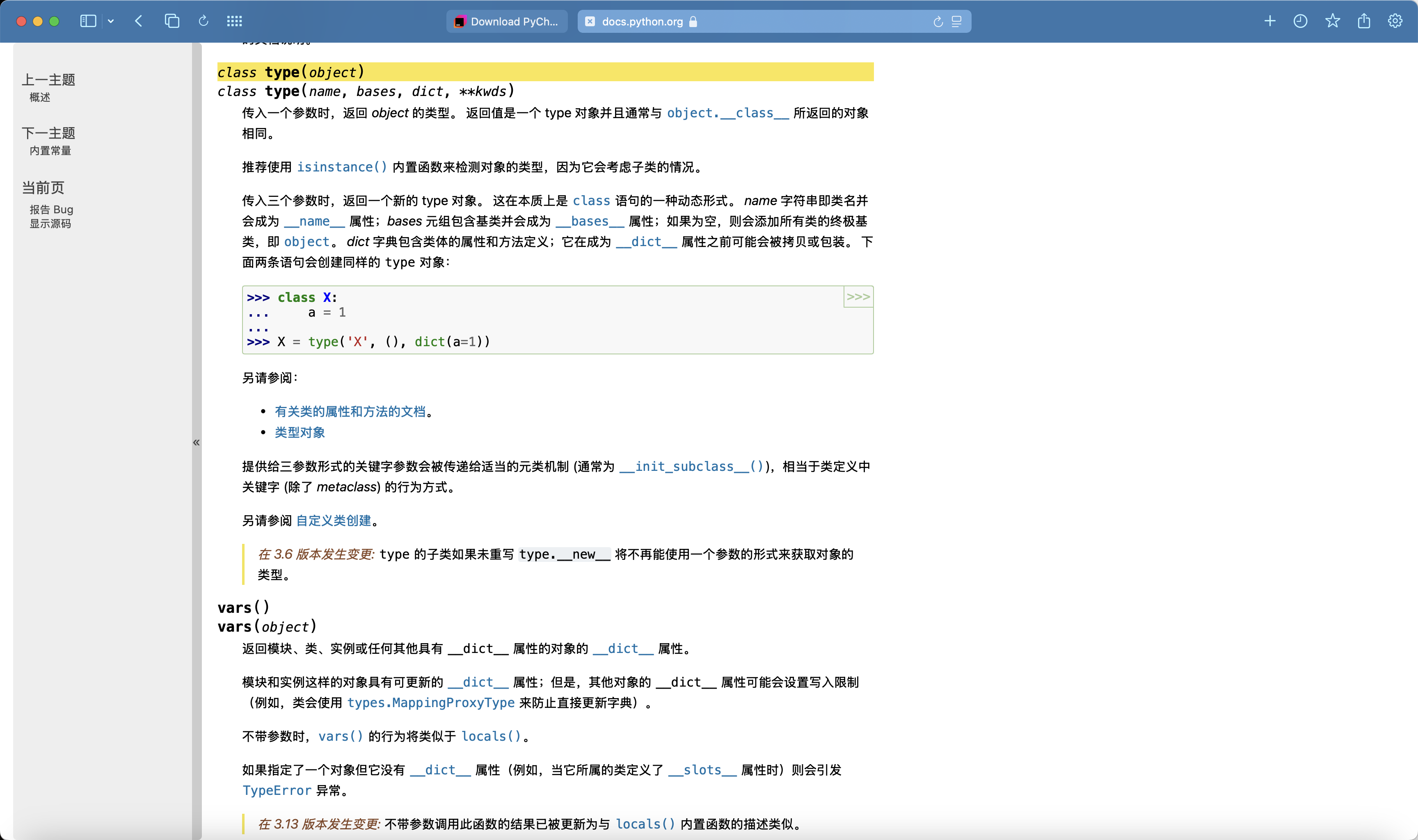- 分享
25.1.13 集训 —— 劳老师: PEP8 / 文档 / debug / 函数 / 周赛
- @ 2025-1-15 10:09:37
主讲人: 劳老师
时间: 2025.01.14
地点: B411机房
PEP 8 规范
'''
PEP 规范(部分)
语法结构
1. 类和函数定义后空两行
2. 注释(#)前空2格,后空1格
3. 赋值符号(=)、大多数运算符左右两侧各1个空格
4. 字典的冒号符号前不空, 后有1个空格
命名
1. 变量名、函数名以小写字母、下划线分隔, 如:student_names / is_prime()
2. 常量使用全大写字母, 如: PI / MAX_N
3. 类以驼峰法命名, 如: StudentLibrary / NameArray
'''
def object_repeater(x):
return x # 这里是一个PEP8规范的注释
PI = 3.1415926
student_num = 5
ch_en_dict = {1: 'one', 2: 'two', 3: 'three'}
python 官方文档
在线帮助
官方文档地址: https://docs.python.org/zh-cn/3.13/
python解释器地址: https://www.python.org/downloads/
pycharm社区版地址: https://www.jetbrains.com/pycharm/download


离线帮助
print(help('list')) # 输出 list 类的帮助文档
print(help('turtle')) # 输出 turtle 模块的帮助文档
DEBUG 调试
def f(x):
return True if x % 2 == 0 else False
lst = [1, 2, 3, 4, 5, 6]
print(lst)
for i in range(len(lst)): # for(int i = 0; i < 6; i ++)
print(f(lst[i]))
调试步骤:
- 选择希望运行暂停的程序位置(通常打在报错行上);
- 在左侧打上断点;
- 右键debug '文件名';
- 观察底部窗口中的各变量名, 也可以追加想观察的表达式;
- 在
concole中观察当前的输出内容, 输入代码进行交互调试; - 点击 step over 可以逐行运行接下去的程序。
函数
函数定义
算法:输出性
编写的四种方式
- 无输入无返回值
- 有输入无返回值
- 无输入有返回值
- 有输入有返回值
无输入无返回值
无返回值看似毫无意义, 但是依然可以有输出, 如: 打印文本 / 生成一个文件
def welcome() -> None:
print('欢迎你来到嘉善技师学院')
welcome()
def reduceBasicfile() -> None:
with open('./README.md', 'w') as file:
file.write('FILENAME: README.md')
reduceBasicfile()
有输入无返回值
有输入, 意味着我们可以让函数对我们的数据进行操作, 无返回值意味着我们大多数情况下可以将结果打印或写入到文件中, 特殊情况是传入的是可变对象, 即: list dict set 我们可以对传入的可变对象直接修改。
def addNum(lst: list[int]) -> None:
maxValue = max(lst)
lst.append(maxValue + 1)
lst = [1, 3, 2]
addNum(lst)
print(lst)
无输入有返回值
无输入有返回值, 非常适合产生一些随机数。
import random
def reduceRandom10Num():
return [random.randint(1, 1000) for _ in range(10)]
print(reduceRandom10Num())
有输入有返回值
功能最强大、使用最普遍的方式, 有输入也有输出。多做一些操作: 判别某个对象的特性后返回 True 或 False; 多某个对象做一些操作, 返回一些相关的值......
# def is_prime(num: int) -> bool:
def create_student(name, class_num, gender = '', description = ''):
print(f'name: {name}\nclass: {class_num}\ngender: {gender}\ndescription: {description}')
create_student('于思言', '2430', '男', '我想写代码')
周赛
Q1038:『三角如山 峰顶自现』
edges = [int(x) for x in input().split()]
edges.sort()
a, b, c = edges
if a + b > c:
if a * a + b * b == c * c:
print('直角三角形')
elif a * a + b * b > c * c:
print('锐角三角形')
elif a * a + b * b < c * c:
print('钝角三角形')
if a == b:
print('等腰三角形')
if b == c:
print('等边三角形')
else:
print('无法围成三角形')
Q1039: 『圆润如水 圆中藏天』
n = int(input())
count = 0
for i in range(-n-2, n + 2):
for j in range(-n-2, n+2):
if i * i + j * j <= n * n:
count += 1
print(count)
Q1040: 『方正如石 四角皆安』
def is_exist(lst) -> bool:
for i in range(0, 2):
for j in range(0, 2):
if lst[i][j] == lst[i+1][j] == lst[i][j+1] == lst[i+1][j+1]:
return True
return False
lst = []
for i in range(3):
lst.append(list(input()))
if is_exist(lst):
print('Exist')
else:
flag = False
for i in range(0, 3):
for j in range(0, 3):
lst[i][j] = 'B' if lst[i][j] == 'W' else 'W'
if is_exist(lst):
print(f'True {i} {j}')
flag = True
break
lst[i][j] = 'B' if lst[i][j] == 'W' else 'W'
if flag == True:
break
if flag == False:
black = 0
for i in range(3):
for j in range(3):
if lst[i][j] == 'B':
black += 1
white = 9 - black
print(f'False {white} {black}')
Q1041: 『菱形似星 心中有光』
n = int(input())
lst = []
for i in range(n // 2):
s = ' ' * i + '*' * (n - 1 - 2 * i)
lst.append(s)
print(s)
for s in lst[::-1]:
print(s)
集训剪影





0 条评论
目前还没有评论...
